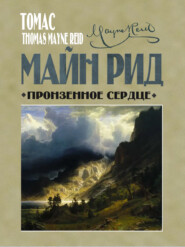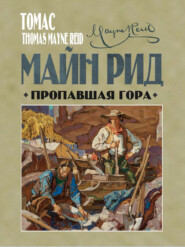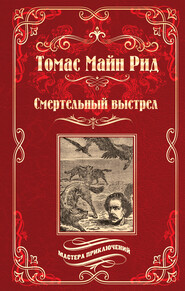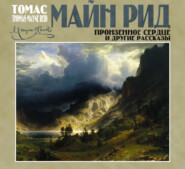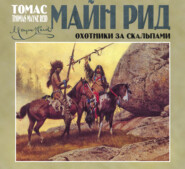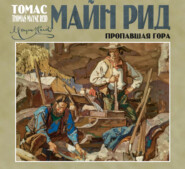По всем вопросам обращайтесь на: info@litportal.ru
(©) 2003-2024.
✖
The Plant Hunters: Adventures Among the Himalaya Mountains
Настройки чтения
Размер шрифта
Высота строк
Поля
“He go fishee.”
“Ah! a fisherman!” rejoined the botanist.
“Yes, Sahib – you watchee, you see.”
This was explanation enough. The boys now remembered having read of the Chinese mode of fishing with cormorants; and even at the distance at which they saw them, they could perceive that the birds on the boat were no other than cormorants. They were the species known as Phalacrocorax Sinensis; and although differing somewhat from the common cormorant, they possessed all the characteristic marks of the tribe, – the long flat body, the projecting breastbone, the beak curving downward at the tip, and the broad rounded tail.
Desirous of witnessing the birds at work, our travellers remained stationary near the shore of the lake. It was evident the fisherman had not yet commenced operations, and was only proceeding towards his ground.
After a short while he reached the centre of the lake; and then, laying aside his long bamboo, he turned his attention to the birds. He was heard giving them directions – just as a sportsman might do to his pointer or spaniel – and the next moment the great birds spread their shadowy wings, rose up from the edge of the boat, and after a short flight, one and all of them were seen plunging into the water.
Now our travellers beheld a singular scene. Here a bird was observed swimming along, with its keen eye scanning the crystal below – there the broad tail of another stood vertically upwards, the rest of its body hidden below the surface – yonder, a third was altogether submerged, the ripple alone showing where it had gone down – a fourth was seen struggling with a large fish that glittered in its pincer-like beak – a fifth had already risen with its scaly prey, and was bearing it to the boat; and thus the twelve birds were all actively engaged in the singular occupation to which they had been trained. The lake, that but the moment before lay tranquil and smooth as glass, was now covered with ripples, with circling eddies, with bubbles and foam, where the huge birds darted and plunged, and flapped about after their finny prey. It was in vain the fish endeavoured to escape them – for the cormorant can glide rapidly through the water, and swim beneath with as much rapidity as upon the surface. Its keel-like breastbone cuts the liquid element like an arrow, and with its strong wings for paddles, and its broad tail acting as a rudder, the bird is able to turn sharply round, or shoot forward with incredible rapidity.
A singular circumstance came under the observation of our travellers. When one of the birds had succeeded in bringing up a fish, which was larger than common, and too large for its captor to convey to the boat, several others might be seen rushing forward, to render assistance in carrying the fish aboard!
You will wonder that these creatures – whose food is the very prey they were capturing for their master – did not swallow some of the fish they were taking. In the case of the younger birds, and those not fully trained, such little thefts do occasionally occur. But in such cases the fisherman adopts a preventive precaution, by fastening a collar round the necks of the birds – taking care that it shall not descend to the thick part of the throat, where it might choke them. With well-trained old birds this precaution is unnecessary. No matter how hungry the latter may be, they bring all they “take” to their master, and are rewarded for their honesty by the smaller and more worthless fish that may have been caught.
Sometimes a bird becomes lazy, and sits upon the water without attempting to do his duty. In such cases, the fisherman approaches with his boat, stretches forward his bamboo, strikes with violence close to where the indolent individual is seated, and scolds him for his laziness. This treatment seldom fails in its effect; and the winged fisher, once more roused by the well-known voice of its master, goes to work with renewed energy.
For several hours this fishing scene is kept up, until the birds, becoming tired, are allowed to return and perch themselves on the boat; where their throat-straps are removed, and they are fed and caressed by their master.
Our travellers did not wait for this finale, but kept on their route; while Karl related to Caspar how that, not a great while ago, so late as the time of King Charles the First, the common cormorant of Europe was trained to fish in the same way in several European countries, and especially in Holland; and that, at the present day, in some parts of China, this mode of fishing is followed to so great an extent, that the markets of some of the largest cities are supplied with fish caught altogether by cormorants.
Certainly, no people exhibit more ingenuity in the training either of plants or animals, than do these same oblique-eyed inhabitants of the Celestial Empire.
Chapter Six.
The Teräi
In approaching any great chain of mountains from the sea-level, you will find a large tract of country consisting of elevated hills and deep ravines, intersected by rapid streams and torrents. This tract is more or less broad, in proportion to the grandeur of the mountain chain; and, in the case of mountains of the first class, it is usually from twenty to fifty miles in breadth. Such a tract of country lies along both sides of the great chain of the Andes in South and North America, and also marks the approach to the Rocky Mountains and the Alleghanies. It is well-known in Italy, under the Alps; and “Piedmont” is the French appellation for this sort of country, which is designated, in our language, by an equally appropriate phrase, “foot-hills.”
The “Alps of India” are not without this geological peculiarity. Along their whole southern flank, facing the hills of Hindustan, extends a belt of foot-hills, often above fifty miles in breadth; and characterised by steep ascents, deep dales and ravines, rapid foaming torrents, difficult paths and passes, and, consequently, by wild and picturesque scenery.
The lower part of this belt – that is, the portion which lies contiguous to the Lot plains, is known to Europeans as the “Teräi.”
The Terai is an irregular strip, of from ten to thirty miles in width, and extends along the whole base of the Himalayas, from the Sutledge River, on the west, to Upper Assam. Its character is peculiar. It differs both from the plains of India and from the Himalaya Mountains, possessing a botany and zoology almost totally distinct from either. It differs from both, in the malarious and unhealthy character of its climate, which is one of the deadliest in the world. In consequence of this, the Teräi is almost uninhabited; the few scattered settlements of half-savage Mechs, its only inhabitants, lying remote and distant from each other.
Most of the Terai is covered with forest and thick jungle; and, notwithstanding its unhealthy climate, it is the favourite haunt of the wild beasts peculiar to this part of the globe. The tiger, the Indian lion, the panther and leopard, the cheetah, and various other large Jelidae, roam through its jungly coverts; the wild elephant, the rhinoceros, and gyal, are found in its forests; and the sambur and axis browse on its grassy glades. Venomous snakes, hideous lizards, and bats, with the most beautiful of birds and butterflies, all find a home in the Terai.
Several days’ marching carried our travellers beyond the more settled portions of the country, and within the borders of this wild, jungle-covered district. On the day they entered the Teräi, they had made an early start of it; and, therefore, arrived at their camping-ground some hours before sunset. But the young botanist, filled with admiration at the many singular and novel forms of vegetation he saw around him, resolved to remain upon the ground for several days.
Our travellers had no tent. Such an incumbrance would have been troublesome to them, travelling, as they were, afoot. Indeed, all three had their full loads to carry, as much as they could well manage, without the additional weight of a tent. Each had his blanket, and various other impedimenta; but one and all of them had often slept without roof or canvas, and they could do so again.
At their present halting-place, they had no need for either. Nature had provided them with a cover quite equal to a canvas-tent. They had encamped under a canopy of thick foliage, the foliage of the banyan tree.
Young reader, you have heard of the great banyan of India; that wonderful tree, whose branches, after spreading out from the main trunk, send down roots to the earth, and form fresh stems, until a space of ground is covered with a single tree, under whose shade a whole regiment of cavalry may bivouac, or a great public meeting be held! No doubt, you have read of such a tree, and have seen pictures of one? I need not, therefore, describe the banyan very particularly. Let me say, however, that it is a fig-tree; not the one that produces the eatable fig, of which you are so very fond, but another species of the same genus – the genus Ficus. Now, of this genus there are a great many species; as many, perhaps, as there are of any other genus of trees. Some of them are only creeping and climbing plants; adhering to rocks and the trunks of other trees, like vines or ivy. Others, like the banyan, are among the largest trees of the forest. They are chiefly confined to tropical countries, or hot regions lying on the borders of the tropics; and they are found in both hemispheres, that is, both in America and the Old World. Some splendid species belong also to Australia. All of them possess, more or less, the singular habit of throwing out roots from their branches, and forming new stems, like the banyan; and frequently they embrace other trees in such a manner, as to hide the trunks of the latter completely from view!
This curious spectacle was witnessed by our travellers where they had encamped. The banyan which they had chosen as their shelter was not one of the largest – being only a young tree, but out of its top rose the huge fan-shaped leaves of a palm-tree of the kind known as the palmyra palm (Borassus flagelliformis). No trunk of the palm-tree was visible; and had not Karl Linden been a botanist, and known something of the singular habit of the banyan, he would have been puzzled to account for this odd combination. Above spread the long radiating fronds of the palmyra directly out of the top of the trunk of the fig, and looking so distinct from the foliage of the latter as to form a very curious sight. The leaves of the banyan being ovate, and somewhat cordate or heart-shaped, of course presented quite a contrast to the large stiff fronds of the palmyra.
Now the puzzle was, how the palm got there. Naturally one would suppose that a seed of the palm had been deposited on the top of the banyan, and had there germinated and thrown out its fronds.
But how did the palm seed get to the top of the fig? Was it planted by the hand of man? or carried thither by a bird? It could not well have been by the latter mode – since the fruit of the palmyra is as large as a child’s head, and each one of the three seeds it contains as big as a goose’s egg!! No bird would be likely to carry about such a bulky thing as that. If there were only one palm-tree growing from the top of one banyan, it might be conjectured that some one had so planted it; but there are many such combinations of these trees met with in the forests of India, and also in districts entirely uninhabited. How then was this union of the two trees to be accounted for?
Of our three travellers Caspar alone was puzzled. Not so Karl and Ossaroo. Both were able to explain the matter, and Karl proceeded to offer the elucidation.
“The fact is,” said the botanist, “that the palm has not grown out of the fig, but vice versa. The banyan is the true parasite. A bird – wood-pigeon, or minobird, or tree-pheasant perhaps – has carried the berries of the fig-tree, and deposited them in the axil of the palmyra. This the smallest birds may easily do, since the fruit of the banyan is not larger than a diminutive cherry. Once in its place the seed has germinated, and sent its roots downward along the trunk of the palm until they have reached the ground. These roots have then flattened around the stem of the palm, until they have enveloped it completely, with the exception of the top, as you see. Afterwards the fig has thrown out lateral branches, until the whole has assumed the appearance of a banyan-tree with a fan-palm growing out of its trunk!”
This was the true explanation. Ossaroo added some remarks stating that the Hindoo people always regard such a union of the two trees with great veneration, and believe it to be a holy marriage instituted by Providence. For himself, Ossaroo – not being a very strict sectarian, nor much given to religion in any form, laughed at the superstition, and called it “humbug.”
Chapter Seven.
Tapping the Palmyra
Almost the first thing done by Ossaroo after he had got relieved of his baggage was to climb the banyan. This he was able to do with ease, as the trunk, in consequence of the peculiar mode of its growth, was full of ridges and inequalities, and moreover Ossaroo could climb like a cat.
But what wanted he up the tree? Was he after the fruit? It could not be that, for the figs were not yet ripe, and even had they been quite mellow, they are but poor eating. Maybe he was going up for the nuts of the palmyra? No – it could not be that either, for these were not shaped. The great flower-spathe had not yet opened, and was only beginning to burst its green envelopes. Had the nuts been formed, and still in their young state, they would have afforded delicate eating. As already stated, the palmyra nuts grow to the size of a child’s head. They are three-cornered, rounded off at the corners, consisting of a thick succulent yellowish rind, each containing three seeds as large as goose-eggs. It is the seeds that are eaten when young and pulpy; but if allowed to ripen, they become quite hard and blue-coloured, and are then insipid and uneatable. But it could not be the seed either which Ossaroo was after, since there were no seeds, nor nuts – only the flower, and that still hidden in its great spadix.
The boys watched Ossaroo narrowly. He had carried up with him a bamboo-joint which he had cut from a very thick cane. It was open at one end, and formed a vessel that would hold rather more than a quart. Another thing they had observed him to take with him; and that was a stone about as big as a paving-stone. Still another implement he carried up the tree – his long knife.
In a few seconds the shikarree had reached the top of the banyan; and clutching the great leaf-stalks of the palm, he climbed up among its huge fronds. Here he was observed to lay hold of the spathe of the flower, and bending it against the trunk, he commenced hammering away with the stone, evidently with the intention of crushing the young inflorescence. With a few blows he succeeded in doing this effectually. He then drew the knife from his scarf, and, with an adroit cut, detached the upper half of the flower-spike, which fell neglected to the ground.
The bamboo vessel was next brought into service. This he fixed on the spathe in such a manner that the incised end remained inside the hollow of the cane. Both flower-spike and cane were then tied to one of the leaf-stalks of the palm, so that the bamboo hung vertically bottom downward; and this arrangement having been completed, the shikarree flung down his hammering stone, replaced his knife under his belt, and defended from the tree.
“Now, Sahibs,” said he, as soon as he had reached terra firma, “you waitee hour – you drinkee Indoo champagne.”
In an hour or so his promise was fulfilled. The bamboo-joint was released and brought down; and, sure enough, it was found to be full of a cool clear liquor, of which all of them drank, esteeming it equal to the best champagne. In fact, there is no more seducing and delicious drink in all India than the sap of the palmyra palm; but it is also very intoxicating, and is used too freely by the natives of the country where this splendid tree flourishes.
Sugar can also be manufactured from this sap, simply by boiling it down. When sugar is to be made, the tree is tapped in a similar manner; but it is necessary to have a little lime in the vessel while collecting the liquid, else it would ferment, and thus spoil it for sugar-boiling.
The reason why Ossaroo was so ready in tapping this particular tree, was because the banyan which enveloped its trunk offered him an excellent means of getting at it. Otherwise it would have been no easy matter to have ascended the smooth slender shaft of a palmyra, rising thirty or forty feet without knot or branch. Of course Ossaroo, as soon as the bamboo was empty, once more climbed up and readjusted it to the “tap,” knowing that the sap would continue to run. This it does for many days, only that each day it is necessary to cut a fresh slice from the top of the flower-stalk, so as to keep the pores open and free.
Though the day had been hot, as soon as twilight came on the coolness of the air rendered it necessary for our travellers to kindle a fire. Ossaroo was not long in striking a light out of his tinder-box, and having set fire to some dry leaves and moss, a blaze was soon produced. Meanwhile Karl and Caspar had broken some branches from a dead tree that lay near the spot, and carrying them up in armfuls, piled them upon the burning leaves. A roaring fire was created in a few minutes, and around this the party seated themselves, and commenced cooking their supper of rice, with some pieces of dried meat, which they had brought along from the last village.
Whilst engaged in this occupation, so agreeable to men who are hungry, the botanist, whose eye was always on the alert for matters relating to his favourite calling, remarked that the wood out of which their fire had been made burned very much like oak. On taking up one of the fagots, and cutting it with his knife, he was astonished to find that it was oak in reality – for there is no mistaking the grain and fibre of this giant of the northern forests. What astonished him was the existence of oak-trees in a country where the flora was altogether tropical. He knew that he might expect to find representatives of the oak family upon the sides of the Himalayas; but he was still only at their foot, and in the region of the palms and bananas.
Karl knew not then, nor is it yet generally known, that many species of oaks are tropical trees – in fact, many kinds may be found in the torrid zone, growing even as low as the level of the sea. It is no less strange, that although there are no oaks in tropical South America and Africa, in Ceylon, or even in the peninsula of India itself, yet there are numerous species in East Bengal, the Moluccas, and the Indian islands – perhaps a greater number of species than grows in any other part of the world!
The sight of this old acquaintance, as they termed the oak, had a cheering effect upon the Bavarian boys; and after supper they sat conversing upon the subject, determined as soon as it was day to look out for some of the living trees as further confirmation of the strange fact they had observed.
They were about thinking of wrapping themselves up in their blankets, and retiring to rest, when an incident occurred that kept them awake for another hour or two.
Chapter Eight.
The Sambur Stag
“See!” cried Caspar, who was more sharp-eyed than Karl.
“Look! look yonder! two lights, I declare!”







